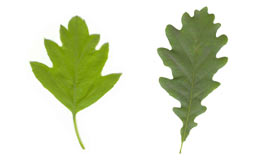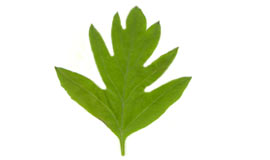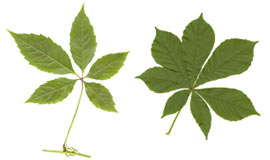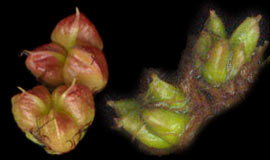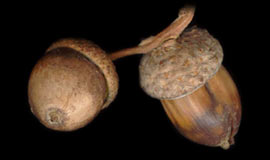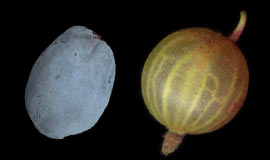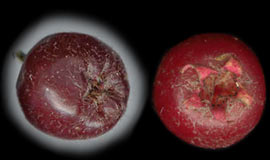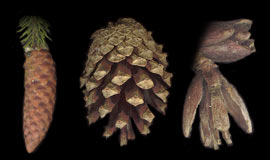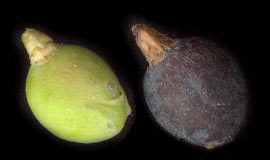Deciduous trees names. Computer identification of trees and shrubs in spring and summer
can purchase in our non-commercial online store.
There you can purchase colored laminated key tables: trees in summer and trees in winter, shrubs in summer and shrubs in winter, and similar graphic dichotomous determinants-walkers: trees in summer , shrubs in summer , trees in winter and shrubs in winter .
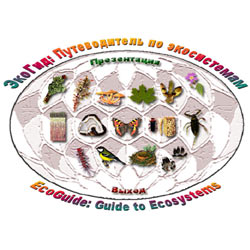
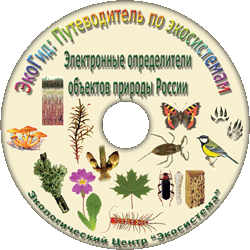
can purchase in our non-commercial online store.
There you can purchase colored laminated key tables: trees in summer and trees in winter, shrubs in summer and shrubs in winter, and similar graphic dichotomous determinants-walkers: trees in summer , shrubs in summer , trees in winter and shrubs in winter .
Determinant
represents computer program, which "produces" a list of defining morphological features common to all objects of the given Atlas-determinant. In this determinant, 16 signs () are used as determinants.
To work with the determinant, the user needs to select features (in any order) and answer options (feature values) - referring to his object (naturally, he should be in front of the researcher). In this case, on the right side of the screen, a list of all species included in the Determinant database will always be visible. With each answer, the number of species in this list will decrease until it comes to two or three, or ideally one.
Textbook, or Handbook of Plant Morphology, contains information about the morphological structure of the objects included in the guide. With regard to this determinant, the reference book includes information on shoot morphology, leaf morphology, flower morphology and fetal morphology(see for example the sample below),
|
Computer identification of woody plants can purchase in our non-commercial online store.
There you can purchase colored laminated key tables: trees in summer and trees in winter, shrubs in summer and shrubs in winter, and similar graphic dichotomous determinants-walkers: trees in summer , shrubs in summer , trees in winter and shrubs in winter .
Appendix.
List of woody plant species included in the guide:
(views are given in alphabetical order)
| Actinidia kolomikta Ledum marsh Hawthorn sp. (American) blackberry Cotoneaster chokeberry Sea buckthorn Podbel ordinary garden apple tree |
Actinidia kolomikta Aronia mitschurinii ledum palustre Berberis vulgaris Betula pendula Betula pubescens Euonymus verrucosa Euonymus europaea Crataegus sanguinea Crataegus oxyacantha Crataegus monogyna Crataegus sp. Vaccinium vitis-idea Sambucus racemosa Calluna vulgaris Parthenocissus quinquefolia Cerasus vulgaris Daphne mezereum Ulmus laevis Ulmus pumila Ulmus glabra Vaccinium uliginosum Pyrus communis Swida alba Swida sanguinea Genista tinctoria Quercus robur Rubus caesius Picea abies Picea pungens Lonicera xylosteum Lonicera tatarica Salix alba Salix caprea Salix viminalis Salix fragilis Salix myrsinifolia Salix acutifolia Salix aurita Amelanchier spicata Viburnum opulus Caragana arborescens Cotoneaster melanocarpus Acer platanoides Acer ginnala Acer tataricum Acer negundo Oxycoccus palustris Aesculus hippocastanum Frangula alnus Grossularia reclinata Corylus avellana Schisandra chinensis Tilia platyphyllos Tilia cordata Larix decidua Rubus idaeus Juniperus communis Hippophae rhamnoides Alnus incana Alnus glutinosa Solanum dulcamara Andromeda polifolia Physocarpus opulifolius Chamaecytisus ruthenicus Sorbus aucuparia Syringa josikaea Syringa vulgaris Prunus domestica Ribes rubrum Ribes nigrum Symphoricarpos albus Pinus strobus Pinus sylvestris Spiraea salicifolia Spiraea japonica Populus balsamifera Populus alba Populus tremula Populus nigra Thuja occidentalis Chamaedaphne calyculata Chaenomeles japonica Humulus lupulus Padus virginiana Padus maackii padus avium Vaccinium myrtillus Philadelphus coronarius Rosa majalis Rosa rugosa Rosa canina Malus sylvestris Malus domestica Fraxinus excelsior Fraxinus pennsylvanica |
Full descriptions and thumbnail images of all species included in this guide can be viewed/downloaded in sections Abstracts and Nature our site.
Computer identification of woody plants can purchase in our non-commercial online store.
There you can purchase colored laminated key tables: trees in summer and trees in winter, shrubs in summer and shrubs in winter, and similar graphic dichotomous determinants-walkers: trees in summer , shrubs in summer , trees in winter and shrubs in winter .
List of defining features and their meanings:
| 1. Growth form 1 - tree 2 - shrub 3 - shrub 4 - liana |
2. Leaf arrangement 1 - next 2 - opposite 3 - oblique 4 - whorled |
3. Sheet size 1 - up to 2 cm 2 - 2-6 cm 3 - 6-12 cm 4 - more than 12 cm |
4. Pubescence of leaves 1 - no pubescence 2 - only along the veins 3 - only from below 4 - from all sides 5 - cilia along the edge |
| 5. The shape of the leaf blade 1 - broadly ovoid 2 - ovoid 3 - lanceolate 4 - rounded 5 - oval 6 - oblong 7 - back wide ovoid 8 - obovate 9 - oblanceolate 10 - heart-shaped 11 - rhombic 12 - triangular 13 - linear, needle 14 - scaly |
6. Dissection of the leaf blade 1 - simple whole 2 - simple triple-lobed 3 - simple palmate-lobed 4 - simple cirro-lobed 5 - simple triple-separate 6 - simple finger-separate 7 - simple pinnatipartite 8 - simple triple-dissected 9 - complex ternary 10 - complex finger 11 - complex unpaired 12 - complex paired |
7. The shape of the edge of the leaf blade 1 - full edge 2 - serrated, serrated 3 - crenate 4 - notched 5 - wavy 6 - double-toothed, double-serrated |
8. Presence of stipules 1 - yes 2 - no |
| 9. The presence of shortened shoots 1 - yes 2 - no |
10. Additional education escape 1 - thorns or spines 2 - spikes 3 - single lateral spines 4 - spines 2-5 together 5 - antennae 6 - escape ends with a thorn 7 - no additional escape formations |
11. Features of the surface of the stem 1 - angular, with ribs or grooves 2 - warts 3 - cork wings 4 - peeling film or bark 5 - wax coating 6 - pubescence 7 - scales (scab) 8 - the surface is shiny, "varnished" 9 - no features |
12. Color of shoot bark 1 - gray, gray-brown, black 2 - brown, reddish 3 - green, green-brown 4 - red, red-brown 5 - yellow, yellow-brown 6 - purple, bluish 7 - white |
| 13. Coloring a flower or cone 1 - white 2 - yellow 3 - red, pink, purple 4 - blue, light blue, violet, lilac, lilac. 5 - green 6 - brown 7 - different color 8 - multicolor whisk |
14. Flowering period 1 - March 2 - April 3 - May 4 - June 5 - July 6 - August 7 - September |
15. Type of fruit (cones) 1 - leaflet 2 - bob 3 - box 4 - nut 5 - acorn 6 - lionfish or two-winged 7 - berry 8 - apple 9 - drupe or polydrupe 10 - woody cone 11 - juicy cone ("coneberry") 12 - other |
16. Additional features 1 - strong smell plants 2 - smell black currant 3 - unequal leaves 4 - leaves are covered with scales 5 - twig shoots 6 - brittle branches 7 - the stem is flattened at the nodes 8 - creeping shoots 9 - lemon color under the bark 10 – White color trunk bark 11 - "weeping" crown 12 - no features |
How do you recognize trees by their leaves? Group: "Researchers" Grade 1 of the North Tatar Secondary School
How do you recognize trees by their leaves? We went on an excursion to the autumn garden. Collected leaves. According to the leaves, "This is whose leaves these are." Photographed their finds. On the Internet, they found the material “How to recognize trees by leaves?”
"These are the leaves."
How can you recognize trees by their leaves? Maple leaf: large, with five sharp lobes. It is so expressive that it has become a symbol of the state of Canada and adorns the coat of arms and the national flag of this country.
The ash leaf is very complex and looks more like a whole branch with several opposite, smooth, narrow-ended leaves. The main petiole on the upper side has a hollow, and water, having got into it, flows, as if through a channel, being absorbed by the leaf cells. The mountain ash leaf is as complex as the ash tree, only each leaf is serrated and more oval.
Aspen has small, whitish-green, round leaves with a wavy edge. They are interesting for their peculiarity: with a noise similar to a loud whisper, they suddenly tremble, sparkle with a silvery-white underside, while all other trees stand still, it seems there is no wind, and aspen leaves rustle and somehow strange spin. For a long time this incomprehensible feature of the aspen leaf remained a mystery. The answer turned out to be very simple: the base of a very long petiole is flattened and looks like a thin plate. Because of this petiole-plate, at the slightest, barely noticeable breath of the breeze, the leaf begins to tumble from side to side, turning either green or whitish side. And it seems to us that the aspen is constantly trembling for no reason. It even became a proverb among people: "It trembles like an aspen leaf."
Alder leaf is round. Moreover, in black alder it has a blunt top, and in gray alder the top is sharp.
Birch leaves are rounded with a sharp end and a serrated edge. Along the edge of a birch leaf there are holes (stomata) through which droplets of water with dissolved sugar are released on a hot day. Such sweet droplets, similar to dew, are called honeydew. Bees love to collect it. In spring, young leaves of birch, alder, poplar shine as if varnished. The fact is that they are covered with resin. You will immediately feel it on your fingers - the leaves are sticky. This resin protects tender young shoots from sudden changes in the weather and makes it difficult for water to evaporate. The resinous substance has a pleasant smell, making the May air especially fragrant. When the leaves mature and become stronger, the shine will disappear, the fragrant aroma will disappear. Willow leaves are narrow, long and sharp. From below they are gray-white, from above they are green, so when the wind shimmers with a brilliant silvery color. Taking a willow leaf in your hands, you notice that it is covered with fluff on top, and silky felt on the bottom. Such a coating is a protection against the withering action of the wind.
Pale green needle-leaves appeared on larch. They stick out in short bunches. You can fearlessly touch these needles - you will not prick yourself. They are soft, elastic, pleasant to the touch - like rubber. And when they grow up, they will become as prickly as spruce
Oak leaves are the last among the trees to bloom: they are afraid of frost. Young shoots of an unusual red color due to the presence of a special coloring matter in them. After a while they turn green. The wavy edges of the oak leaf seem to follow the contour of the crown of an adult tree. Since ancient times, the branch of this tree has been a symbol of strength, nobility, power, goodness. Wreaths of oak leaves were awarded to warriors who performed outstanding feats. Even today, the image of two oak leaves flaunts on the cockade of the cap and in the buttonholes of the uniform of forestry workers, those who grow and protect the forest.
Our observations: Now we can easily recognize trees by leaves. Each tree has its own leaf shape. Although all the leaves of the trees are green, there are so many shades of green that, looking closely, the trees in spring can be easily distinguished by color. Yellow-green foliage of ash, dark green - maple, sparkling - aspen ... An excellent opportunity to explore the richness of shades of green alone in a color drawing
Instruction
Starting from the first spring days, walk more in parks and forest areas, watch the emerging tender leaves, try to visually remember the trees themselves and the shape of the leaves. Specify their names if necessary. Use a camera. Identify your photographs with illustrations in encyclopedias, with photographs posted on sites about trees. So you can remember the names of the trees, and the description of their leaves.
Gather a herbarium. For a long time, it will always be possible to look and clarify which tree the fallen leaf belongs to.
Use the emerging applications for phones and other devices to consolidate the acquired skills.
Spring fills our lives with green trees in parks, forests and gardens. But do we know trees well enough to accurately determine which tree before us: spruce, pine, poplar or maple? What will you answer the question of an inquisitive child if he asks you: “What is this tree?»
Instruction
It is possible to accurately determine the species of trees by their leaves. To do this, of course, you will need some of the most elementary knowledge in the field of the science of trees - dendrology, as well as minimal experience. The fact is that the leaf of each type of tree has a unique shape and structure.
The maple leaf is very difficult to confuse with the leaves of other trees. It is quite large and consists of five sharp peculiar “blades”. Take a look at the flag of Canada and see what it looks like Maple Leaf. You will easily remember it for the rest of your life.
Oval, with teeth, rowan leaves, located in a special way on a branch, are very difficult to confuse with something else. In the autumn, when bright juicy berries appear on the mountain ash, hanging in clusters, there is no need to determine this. tree by its leaves.
Aspen has small, whitish, rounded aspen leaves with a wavy contour, but they can also be identified by another feature. They are able to tremble, making a noise that is somewhat reminiscent of a whisper. No wonder they say: "It trembles like an aspen leaf." The point here is the flattened shape of the petiole base, which is why it resembles a thin plate. The wrong side of the aspen leaf has a whitish silver color.
Almost everyone knows birch leaves, they are round and have sharp jagged edges. However, in order to understand that there is a birch in front of you, you can not even look at the leaves. The beautiful birch in her snow-white attire can be seen from afar.
Willow leaves are pointed, long and narrow. The undersides are greyish-white. The upper part of the willow leaf is covered with a kind of "fluff", the bottom of the leaf is silky.
Aspen, or trembling poplar - high deciduous tree from the Willow family, which is widespread throughout Russia. Outside of it, aspen can be found in Europe, Kazakhstan, Mongolia, China, Korea.

Aspen appearance
Aspen is distinguished by a columnar trunk, which can reach a length of 35 m and a diameter of 1 m. decorative forms have pyramidal and weeping crowns. A characteristic feature of this tree is the smooth bark of light green or light gray. Closer to the roots with age, it darkens and cracks. Aspen wood has a white color with a slight greenish tinge. V dark time days, aspen bark can be confused with birch, although if you touch it with your hands, differences from birch bark become noticeable. The bark of birch is rough.
V winter time, due to the lack of foliage, aspen can be confused with poplar. They can be distinguished, perhaps, only by location. So, poplar is usually not found in forests, and in the city, on the contrary, aspen rarely grows. A more reliable difference is the kidneys. In poplar they are longer.
In the summer, aspen can be confidently recognized by its leaves. They are round or rhombic in shape with uneven notched edges, 3-7 cm long. In coppice shoots, the leaves, as a rule, are large: their length reaches 15 cm. At the same time, they have an almost heart-shaped shape.
The venation of aspen leaves is pinnate. They are smooth on both sides, but on the outside they are dark green in color, and on the bottom they are light gray-green. With the advent of autumn, the foliage is painted in a variety of colors - from golden to crimson.
The arrangement of branches and leaves at the aspen is next. It is noteworthy that the leaves on this tree tremble excitedly even at the slightest breeze. It's all because of their special structure. Aspen leaves have long petioles that are flattened, while in the middle they are thinner. Meanwhile, there is a phraseological unit “tremble like an aspen leaf”, which means “shake with fear”.
Aspen is a dioecious plant. Its flowers are inconspicuous, small, collected in hanging earrings. The flowers on the male tree are reddish in color and up to 15 cm long. The female catkins are greenish and slightly thinner. Aspen blooms before the leaves bloom.
Where does the aspen grow?
Aspen feels good on different soils. It grows in the forest-steppe and forest zones. It can be seen in forests, along river banks, edges, occasionally in clearings and dry sands, in swamps, ravines and in the mountains.
Often it forms aspen forests and is part of a mixed forest in company with deciduous and coniferous species. Usually next to the aspen you can see pine, larch, birch, alder. The aspen is able to survive a forest fire because its roots are located deep underground.
Determining the type of tree by leaves, bark, trunk or branches is quite simple. However, woodcarvers often have to deal with blanks in the form of debarked snags, boards and bars. In this case, wood can only be determined by carefully studying its structure. Of course, experience in dealing with the most different breeds trees.

You will need
- - hacksaw;
- - a sharp knife;
- - magnifying glass;
- - sandpaper;
- - brush;
- - pure water.






